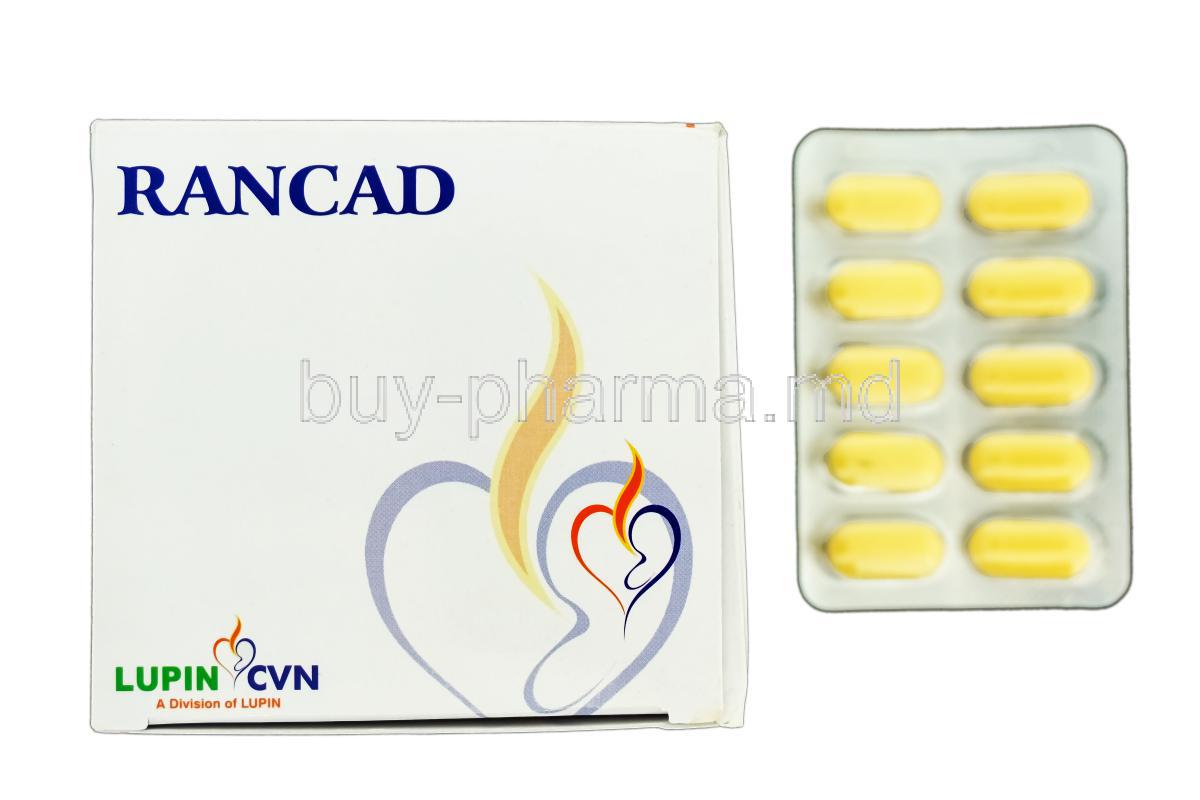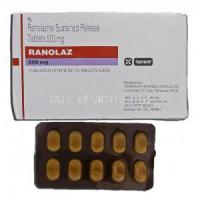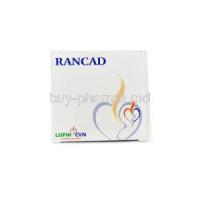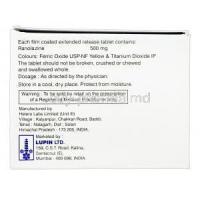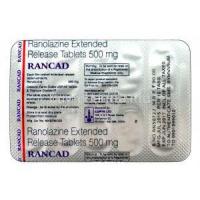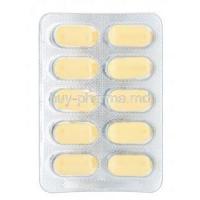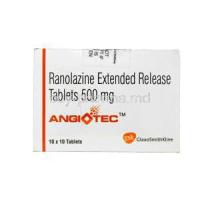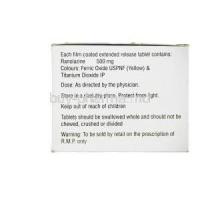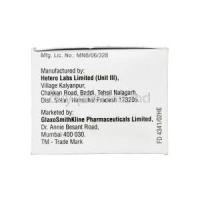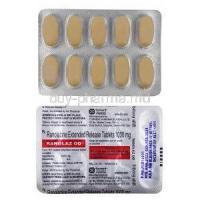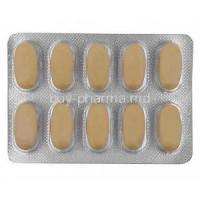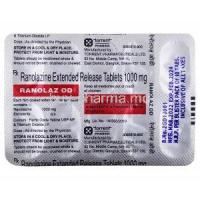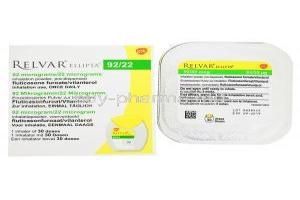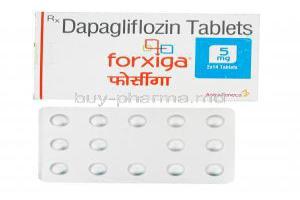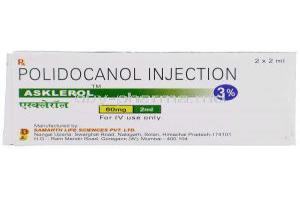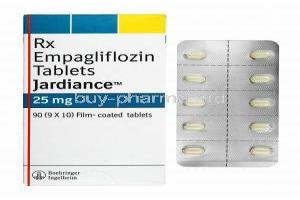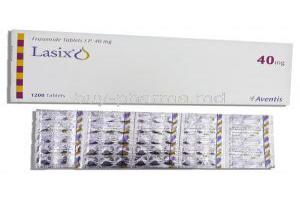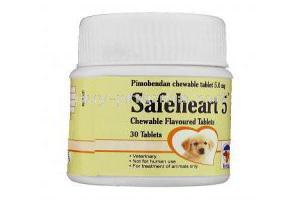Ranolazine ER
- Â
- Introduction
- Â
- Uses
- Â
- Off-Label Use
- Â
- How it Works
- Â
- Dosage and Administration
- Â
- Composition
- Â
- Storage
- Â
- Interaction
- Â
- Warning
- Â
- Contraindication
- Â
- Careful Administration
- Â
- Important Precautions
- Â
- Administration to Elderly
- Â
- Administration to Pregnant Women and Nursing Mothers
- Â
- Administration to Children
- Â
- Common Side Effects
- Â
- Overdosage
- Â
- Handling Precautions
- Â
- Common Side Effects
- Â
- Overdosage
- Â
- Handling Precautions
Introduction
Ranolazine Extended Release (ER) is hailed as an advancement in the fight against chronic angina, providing hope for individuals dealing with this challenging condition. Its impact goes beyond relieving symptoms, marking a significant change in cardiovascular treatment methods. The transformation of Ranolazine ER from a treatment to a preferred medication reflects a path of thorough scientific validation and medical expertise, ushering in a fresh era in chronic angina care.
Uses
Ranolazine ER is mainly used for managing angina, standing out from traditional treatments due to its unique way of working. Adjusting the sodium and calcium channels in the heart, Ranolazine ER helps decrease the heart's need for oxygen, leading to angina episodes. Clinical trials have confirmed that this medication effectively reduces exercise frequency and improves patients' ability to exercise.
Off-Label Use
The investigation into using Ranolazine Extended Release (ER) for purposes other than treating chronic angina highlights its versatility in medical practice. This exploration of possibilities is backed by a growing body of clinical research that reveals the drug's potential in addressing various heart-related issues. The evidence supporting its off-label use is not just based on stories. It is firmly grounded in accurate data demonstrating Ranolazine ER's effectiveness in unexpected situations. Experts have differing opinions on these uses; while acknowledging the potential benefits, they also emphasize the importance of considering the associated risks. It is crucial for healthcare providers to carefully weigh these varying viewpoints when considering using Ranolazine ER off-label.
- Applications Exploration: Delving into treating heart conditions.
- Clinical Support: Data backing effectiveness beyond the intended use.
- Expert Views: perspectives on benefits and risks.
How it Works
Ranolazine ER works differently from treatments for angina by targeting the late phase of the sodium current in myocardial cells. This helps reduce calcium overload, improving heart function and oxygen demand. As a result, patients experience blood flow and heart efficiency, leading to a higher quality of life without the limitations of angina. Compared to treatments, Ranolazine ER stands out for its effectiveness and positive outcomes, making it a significant advancement in cardiovascular medicine.
Dosage and Administration
The way Ranolazine Extended Release (ER) is given depends on carefully following the recommended doses and treatment schedules to achieve the best therapeutic results. Starting with a dose, healthcare providers may change the treatment plan based on how well it works and how well it is tolerated, ensuring personalized care for each patient. Specific attention is given to groups of people like those with liver problems or who are taking certain medications, which may require adjusting the doses to reduce the risk of adverse effects. The methods used for giving the medication highlight how vital timing and dietary factors are in improving how well the drug is absorbed and works effectively.
- Recommended doses: Customized based on each patient's needs and health conditions.
- Adjustments for populations: Careful consideration for patients with liver issues or those taking specific medications.
- Administration methods: Focus on timing and dietary aspects to enhance absorption optimally.
Composition
The formulation of Ranolazine ER consists of a combination of active components and additives, each playing a crucial part in the effectiveness and stability of the drug. Ranolazine, the active ingredient, is central to its therapeutic effects by alleviating chronic angina symptoms. Additives such as binders, fillers, and stabilizers are thoughtfully chosen to improve the drug absorption rate, longevity, and patient tolerance. Insights, into the production process unveil an integration of pharmaceutical knowledge and technology that guarantees the reliable creation of top notch medication.
- Active ingredients: How Ranolazine helps alleviate angina symptoms.
- Additives: Enhancing bioavailability, stability, and patient acceptance.
- Production process: coordination ensuring consistent high quality.
Storage
Maintaining the effectiveness and quality of Ranolazine ER relies heavily on storing it following guidelines on temperature, humidity control, and light exposure restrictions. Adhering to these guidelines guarantees that the medication retains its potency and safety until its expiration date. Clear instructions regarding shelf life and expiration dates are provided to inform patients and healthcare providers about the medication usage period. Additionally, recommendations for disposing of expired medication highlight the importance of considering environmental impact and following safety protocols to avoid accidental exposure or misuse.
- Key points include storage conditions (covering temperature, humidity, and light exposure) and shelf life guidelines for timely consumption.
- Disposal suggestions emphasizing environmental awareness
- Safety measures for medications no longer in use.
Interaction
The interaction between Ranolazine Extended Release (ER) and other drugs is quite intricate, requiring an understanding of potential interactions and their impacts. Everyday interactions involve statins, blood pressure medications, and specific antiarrhythmics, which can either enhance or reduce the effectiveness of the medicines involved. Ranolazine ER primarily affects the metabolic processes crucial for drug elimination when combined with medications. Healthcare professionals should carefully assess patient drug regimens to prevent interactions by considering alternative treatment approaches or adjusting dosages as necessary.
- Key drug interactions: Statins, blood pressure medications, antiarrhythmics.
- Impact on drugs: Changes in metabolic pathways affecting how drugs are eliminated.
- Recommendations: Carefully evaluate and modify patient medication regimens to prevent interactions.
Warning
While Ranolazine ER proves effective in treating angina, it is not without its share of risks and side effects. These can vary from issues like dizziness and constipation to more heart-related severe complications. It is crucial to monitor and address any adverse effects as recommended by guidelines that advise regular checkups and tests to detect and manage reactions early on. In cases of reactions, prompt emergency intervention is essential to prevent potentially life-threatening consequences, highlighting the significance of educating patients and caregivers on recognizing early signs of adverse effects.
Contraindication
Ranolazine ER should not be used in situations due to potential risks identified through a thorough review of clinical information. These situations include but are not limited to existing QT prolongation, severe liver issues, and the use of medications that strongly inhibit CYP3A. A detailed examination of these restrictions sheds light on why healthcare providers should avoid prescribing Ranolazine ER to patients whose risks outweigh the benefits. This careful approach prioritizes patient well being and aims for the treatment results.
- Situations where Ranolazine ER is not recommended: QT prolongation, liver problems.
- Explanation of restrictions: Based on data analysis and weighing risks against benefits.
- Reasoning behind these decisions: Ensuring safety and enhancing treatment effectiveness.
Careful Administration
Administering Ranolazine Extended Release (ER) requires an approach, especially when dealing with sensitive groups. It's important to consider individuals with health issues like kidney or liver problems, as adjusting the dosage is crucial to avoid any potential adverse effects. The treatment plan for these patients needs to be revised to balance effectiveness and safety. Keeping track of their progress and checking in regularly are parts of the treatment process, ensuring that any new side effects or issues are dealt with promptly. Regular evaluations help tune the treatment plans, leading to better patient outcomes.
- Special considerations for populations: Customized doses to reduce risks.
- Adjustments for health conditions: Precise treatment for safety and effectiveness.
- Follow-up: Essential for spotting and managing new complications.
Important Precautions
Ensuring the management of chronic angina with Ranolazine ER involves more than just medication. Patients must embrace a healthy lifestyle by focusing on balanced nutrition, staying active, and quitting smoking. Following the prescribed dosages is crucial, as any deviations could lead to symptom control or unwanted side effects. Monitoring liver function and electrolyte levels is also essential to reduce the risk of the impact and improve treatment outcomes.
- Lifestyle choices and dietary habits play a role in maintaining heart health.
- Adhering to treatment plans is vital for reaching targets and reducing potential risks.
- Taking action through regular checkups helps prevent possible side effects.
Administration to Elderly
The use of Ranolazine ER in individuals requires careful attention due to changes in how the body processes the medication and their increased likelihood of experiencing side effects. Adjusting the dosage may be needed to accommodate any decline in kidney or liver function, ensuring that the drug remains effective while minimizing reactions. To manage side effects and potential drug interactions in patients, it is crucial to thoroughly assess all medications they are taking to avoid any adverse outcomes. Clinical trials have confirmed the effectiveness and safety of Ranolazine ER in adults, supporting its use as a viable treatment option. However, tailoring dosages and closely monitoring their effects on this population is essential.
- Ways to adjust dosages for individuals: Considering changes in how the body processes drugs.
- Managing side effects: Being vigilant about monitoring and reviewing medications.
- Safety in geriatric patients: Backed by clinical evidence with individualized considerations.
Administration to Pregnant Women and Nursing Mothers
Ranolazine Extended Release (ER) use in women, and nursing mothers are approached with great care, emphasizing a thorough safety assessment and adherence to strict clinical protocols. Due to the lack of data, a careful balance between potential treatment benefits and risks to fetal development is advised. Guidelines for breastfeeding mothers take into account the presence of the drug in breast milk and its impact on newborns. Healthcare providers are responsible for making decisions regarding Ranolazine ER prioritizing the well being of both mother and child in their clinical practice.
- Approach with caution based on information about safety and guidelines.
- Evaluation of the impact on fetal growth is crucial.
- Consider drug excretion in breast milk when advising breastfeeding mothers.
Administration to Children
Administering Ranolazine ER to children requires dosages and administration guidelines based on age, emphasizing the importance of ensuring safety and effectiveness in pediatric patients. The unique pharmacokinetic properties of Ranolazine ER, combined with the differences in children, guide the customization of dosages to minimize adverse reactions while maximizing therapeutic benefits. To guarantee safety and efficacy in this group thorough clinical evaluation is essential with research contributing to a better understanding of how the drug works.
It is crucial to consider the effects on growth and development for long-term usage, highlighting the need for a comprehensive approach to patient care that:
- Takes into account age-specific dosages and administration tailored to pediatric pharmacokinetics,
- Continuous assessment of safety and efficacy through clinical trials
- Monitoring for impacts on growth and development over time.
Common Side Effects
Ranolazine Extended Release (ER) may lead to side effects, with some being more common than others. Common side effects include feelings of lightheadedness, headaches, digestive issues like constipation, and feelings of nausea, which are indicative of the drug's overall impact on the body. To address these reactions, treatment options involve adjusting the dosage, providing symptomatic relief, and making lifestyle changes to alleviate discomfort. Patients should consult a healthcare provider if side effects persist or worsen or if they notice symptoms that could signal severe issues like irregular heartbeats or significant blood pressure changes.
- Common adverse reactions: Lightheadedness, headaches, digestive problems (constipation), nausea.
- Approaches for managing these reactions: Adjusting dosage, providing relief, and making lifestyle changes.
- When to seek assistance: Persistent or worsening side effects signs of serious complications.
Overdosage
In cases of taking much Ranolazine ER, symptoms like severe dizziness, vomiting, and possibly irregular heartbeats or low blood pressure might occur. The immediate response to an overdose involves providing care and closely monitoring the heart's rhythm. While there is information on antidotes, it highlights the importance of preventive actions and early treatment. Managing the effects of an overdose in the term may necessitate hospitalization and ongoing observation to prevent any lasting impacts on heart health and overall well-being.
Handling Precautions
Healthcare professionals must follow guidelines when dealing with Ranolazine ER to avoid accidental exposure or ingestion. These guidelines cover storing the medication, following safety procedures during distribution, and using protective gear when necessary. It's not about the healthcare providers; patients must also be educated. They must understand the importance of storage and the risks of mishandling the medication. These thorough precautions aim to protect healthcare providers and patients from exposure to Ranolazine ER, ultimately improving its safety record.
- Guidelines for healthcare professionals: Properly store medication and follow safety protocols during distribution.
- Preventive measures against exposure or ingestion: Use protective gear and educate patients.
- Safety procedures for handling and distributing: Precautions for enhanced safety.
Common Side Effects
Using Ranolazine Extended Release (ER) may lead to side effects commonly observed in clinical settings. These side effects, such as dizziness, nausea, constipation, and headaches, although usually not severe, highlight the importance of managing them. Ways to control these side effects include adjusting the dosage, using therapies for symptom relief, and making lifestyle changes to reduce their impact. Patients are advised to monitor their symptoms and seek prompt medical attention if the side effects worsen or persist, which could indicate more serious underlying issues.
- Overview of side effects: Dizziness, nausea, constipation, headache.
- Management approaches: Dosage adjustments, symptom relief treatments, lifestyle changes.
- When to consult a doctor: If side effects worsen or persist.
Overdosage
An overdose of Ranolazine ER can lead to a range of symptoms and signs, some mild and others serious, like severe low blood pressure and heart-related issues. When an overdose occurs, immediate steps should focus on providing care to maintain essential organ functions and stabilize blood flow. While there are no remedies for a Ranolazine ER overdose, general measures such as gastric lavage or activated charcoal may help reduce absorption. Long term management involves monitoring for any lingering effects especially on the heart health requiring a collaborative approach to healthcare.
- Symptoms of an overdose: Severe low blood pressure, effects on the heart. Immediate.
- Remedies: Supportive care, possibly gastric lavage or activated charcoal.
- Long-term handling of overdose consequences; monitoring of cardiovascular health collaborative medical care.
Handling Precautions
Healthcare providers who prescribe Ranolazine ER are advised to follow guidelines to prevent accidental exposure or ingestion. These precautions include storing the medication to prevent unauthorized access and ensuring safety measures are carefully observed during dispensing. Avoiding exposure also involves wearing appropriate protective gear when needed and providing patients with thorough safety instructions.
These procedures protect both healthcare professionals and patients, helping to avoid unintended exposure to Ranolazine ER and promoting a culture of safety in the medical setting. Critical guidelines for healthcare professionals include following storage and dispensing protocols, taking measures against accidental exposure or ingestion through personal protective equipment and patient education, and implementing safety protocols for handling and dispensing medication to create a safe therapeutic environment.

